|
According to Sally Kempton, "We don’t always know why difficult people show up in our lives. There are some good theories about it, of course. Jungians, along with most contemporary spiritual teachers, tell us that ALL the people in our lives are mirroring what’s inside us, and that once we clear our minds and clarify our hearts; we’ll stop attracting angry girl friends, prickly co-workers and tyrannical bosses. Then there’s the view—not necessarily inconsistent with the first– that life is a school, and that difficult people are our teachers. (In fact, when someone tells you that you’re a teacher for him, it’s often a good idea to ask yourself exactly what it is about you that he finds abrasive!) One thing is clear, though: at some point in our lives, most of us will have someone around us who is show-stoppingly hard to take. Sometimes, it seems as if everyone we know is giving us trouble.
So, one of the great on-going questions for anyone who wants to live an authentic spiritual life without going into a cave is this: how do you deal with difficult people without being harsh, wimpy, or putting them out of your heart? How can you explain to your friend who keeps trying to enlist you in service of her own dramas, that you don’t want to be part of her latest scenario of mistrust and betrayal -- and still remain friends? How do you handle the boss whose tantrums terrorize the whole office, or the co-worker who bursts into tears several times a week and accuses you of being abrupt when all you’re trying to do is get down to business? More to the point, what can you do when the same sorts of difficult people and situations keep showing up again and again in your life? Should you chalk it up to karma? Should you find ways to resolve it through discussion or even pre-emptive action? Or should you take the truly challenging view that the people in your life who seem harsh or clingy or annoying are actually reflections of your own disowned, or shadow tendencies? In other words, is it really true that we project onto other people the qualities in ourselves that we dislike or disallow, and then condemn in someone else the traits we reject in ourselves? Does dealing with difficult people have to begin with finding out what you might need to work on in yourself? The short yogic answer here is "Yes." Obviously, that doesn’t mean you should overlook other people’s anti-social behavior. (Owning your own part in a difficult relationship is not the same thing as wimping out of a confrontation!) Moreover, some relationships are so difficult that the best way to change them is to leave. But here’s the bottom line: Try as we will, we can’t control other people’s personality and behavior. Our real power lies in our ability to work on ourselves. This, of course, is Yoga 101. We all ‘know’ it, yet when we’re in the crunch of relational malfunction, it’s often the first thing we forget. So, here it is again: your own inner state is your only platform for dealing successfully with other people. Not even the best interpersonal technique will work if you do it from a fearful, judgmental, or angry state of mind. Your own open and empowered state is the fulcrum, the power point, from which we can begin to move the world. [...] After all, what makes someone difficult? Essentially, it’s their energy. We don’t have to be students of quantum field theory or Buddhist metaphysics to sense how much the energies around us affect our moods and feelings. What makes someone tough for you to take? Basically, it has to do with how your energies interact with theirs. Every one of us is at our core an energetic bundle. What we call our personality is actually made up of many layers of energy -- soft, tender, vulnerable energies as well as powerful, controlling or prickly energies. We have our wild and gnarly energies, our kindly energies, our free energies and our constricted, contracted ones. These energies, expressing themselves through our bodies, thoughts, and emotions, and minds, manifest as our specific personality signature at any given moment. What we see on the surface, in someone’s body language and facial expressions, is the sum of the energies that are operating in them. As we speak, its the energy behind our words that most deeply impacts others. The beginning of change, then, is learning how to recognize and modulate our own energy patterns. The more awareness we have -- that is, the more we are able to stand aside and witness our personal energies of thought and feeling and (rather than identifying with them) "the easier it is to work with our own energies. This takes practice. Most people don’t start out with a highly developed awareness of their own energy or the way it impacts others -- and even fewer of us know how to change the way our energies work together." Sally Kempton is a student of Swami Muktananda, an author and a spiritual teacher. Excerpt above is from this article. "About 40 percent of people's daily activities are performed each day in almost the same situations, studies show. Habits emerge through associative learning. 'We find patterns of behavior that allow us to reach goals. We repeat what works, and when actions are repeated in a stable context, we form associations between cues and response,' a researcher explains.
Full Story Much of our daily lives are taken up by habits that we've formed over our lifetime. An important characteristic of a habit is that it's automatic-- we don't always recognize habits in our own behavior. Studies show that about 40 percent of people's daily activities are performed each day in almost the same situations. Habits emerge through associative learning. "We find patterns of behavior that allow us to reach goals. We repeat what works, and when actions are repeated in a stable context, we form associations between cues and response," Wendy Wood explains in her session at the American Psychological Association's 122nd Annual Convention. What are habits? Wood calls attention to the neurology of habits, and how they have a recognizable neural signature. When you are learning a response you engage your associative basal ganglia, which involves the prefrontal cortex and supports working memory so you can make decisions. As you repeat the behavior in the same context, the information is reorganized in your brain. It shifts to the sensory motor loop that supports representations of cue response associations, and no longer retains information on the goal or outcome. This shift from goal directed to context cue response helps to explain why our habits are rigid behaviors. There is a dual mind at play, Wood explains. When our intentional mind is engaged, we act in ways that meet an outcome we desire and typically we're aware of our intentions. Intentions can change quickly because we can make conscious decisions about what we want to do in the future that may be different from the past. However, when the habitual mind is engaged, our habits function largely outside of awareness. We can't easily articulate how we do our habits or why we do them, and they change slowly through repeated experience. "Our minds don't always integrate in the best way possible. Even when you know the right answer, you can't make yourself change the habitual behavior," Wood says. Participants in a study were asked to taste popcorn, and as expected, fresh popcorn was preferable to stale. But when participants were given popcorn in a movie theater, people who have a habit of eating popcorn at the movies ate just as much stale popcorn as participants in the fresh popcorn group. 'The thoughtful intentional mind is easily derailed and people tend to fall back on habitual behaviors. Forty percent of the time we're not thinking about what we're doing,' Wood interjects. 'Habits allow us to focus on other things…Willpower is a limited resource, and when it runs out you fall back on habits.' How can we change our habits? Public service announcements, educational programs, community workshops, and weight-loss programs are all geared toward improving your day-to-day habits. But are they really effective? These standard interventions are very successful at increasing motivation and desire. You will almost always leave feeling like you can change and that you want to change. The programs give you knowledge and goal-setting strategies for implementation, but these programs only address the intentional mind. In a study on the 'Take 5' program, 35 percent of people polled came away believing they should eat 5 fruits and vegetables a day. Looking at that result, it appears that the national program was effective at teaching people that it's important to have 5 servings of fruits and vegetables every day. But the data changes when you ask what people are actually eating. Only 11 percent of people reported that they met this goal. The program changed people's intentions, but it did not overrule habitual behavior. According to Wood, there are three main principles to consider when effectively changing habitual behavior. First, you must derail existing habits and create a window of opportunity to act on new intentions. Someone who moves to a new city or changes jobs has the perfect scenario to disrupt old cues and create new habits. When the cues for existing habits are removed, it's easier to form a new behavior. If you can't alter your entire environment by switching cities-- make small changes. For instance, if weight-loss or healthy eating is your goal, try moving unhealthy foods to a top shelf out of reach, or to the back of the freezer instead of in front. The second principle is remembering that repetition is key. Studies have shown it can take anywhere from 15 days to 254 days to truly form a new habit. 'There's no easy formula for how long it takes,' Wood says. Lastly, there must be stable context cues available in order to trigger a new pattern. "It's easier to maintain the behavior if it's repeated in a specific context," Wood emphasizes. Flossing after you brush your teeth allows the act of brushing to be the cue to remember to floss. Reversing the two behaviors is not as successful at creating a new flossing habit. Having an initial cue is a crucial component." Journal References 1. D. T. Neal, W. Wood, M. Wu, D. Kurlander. The Pull of the Past: When Do Habits Persist Despite Conflict With Motives? Personality and Social Psychology Bulletin, 2011; 37 (11): 1428 DOI: 10.1177/0146167211419863 2. Sarah Stark Casagrande, Youfa Wang, Cheryl Anderson, Tiffany L. Gary. Have Americans Increased Their Fruit and Vegetable Intake?The Trends Between 1988 and 2002. American Journal of Preventive Medicine, 2007; 32 (4): 257 DOI: 10.1016/j.amepre.2006.12.002 Source Society for Personality and Social Psychology. "How we form habits, change existing ones." ScienceDaily. ScienceDaily, 8 August 2014. www.sciencedaily.com/releases/2014/08/140808111931.htm According to Andrew Cohen, “Ego is the deeply felt sense of being separate and superior. Indeed, it is an emotional and psychological compulsion to see and feel the self as being separate from and superior to the other, the world, and the whole universe. It is that locus point where the sense of individuality is also a sense of alienation, where the experience of autonomy is also one of isolation, and where even the experience of freedom is always shadowed, by a deeper sense, at the core of our being, by a sense of bondage, limitation, and hopelessness.
I believe that for most of us, the only solution to this evolutionary cul-de-sac, the only way to our own higher development, lies in the context of human relationship, relationship based upon a breakthrough to a shared experience and recognition of consciousness beyond ego -- a consciousness in which all parties experience simultaneously their own individual and collective transparency while remaining fully and completely themselves. In this higher We consciousness, we recognize, perhaps for the first time, why ego is the only problem, the only obstacle to the fulfillment of our imminent evolutionary potential. As long as the fears and desires of the ego remain the fundamental locus of our attention and the impulse to evolve is but a faint murmur in the background of awareness, nothing less than overwhelming force will bring the ego to its knees. The force of what? The force of impersonal absolute love that sees no other and recognizes only itself. In that love, our own higher conscience is awakened and screams relentlessly for our unconditional surrender without compromise. And it will keep on screaming until we all have finally transcended the need to be separate." 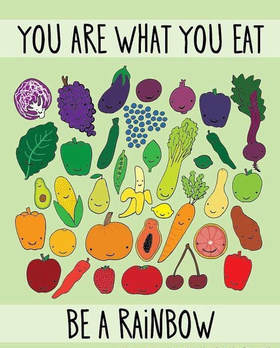 As any parent of a picky eater knows, getting children to eat for health can be a challenge. Check out Sharon McRae's tips for transitioning your little ones to a plant-based diet. 1. I explained to my three children why we were making the transition to a plant-strong diet. We watched the fabulous movie “Forks Over Knives” together. 2. We explored recipes from some amazing recipe books including “Engine 2 Diet” by Rip Esselstyn, “Unprocessed” by Chef AJ, and “Super Immunity” by Dr. Joel Fuhrman, among others, and I began experimenting with new foods with family input. 3. I found delicious substitutes for the kids’ favorite foods. We used Daiya “cheese” initially and later transitioned away from it. See our recipe for pizzas made with pizza-hummus. The kids say it’s the best pizza they’ve ever eaten! And see the recipes for raw brownies from Chef AJ and black bean brownies from Dr. Fuhrman which are all huge hits with the kids. 4. I encouraged my family to help with choosing recipes and with food preparation. 5. Our new kitchen tools include a huge salad bowl, a rice cooker to make big batches of grains for the week, a pressure cooker to quickly cook beans (some of which otherwise take 45 minutes to boil), and for a big batch of some type of bean vegetable soup. A blender makes quick, delicious salad dressings, sauces & smoothies, and a food processor makes bean spreads and nut butters for sandwiches and snacks. 6. Our motto: Be prepared and plan ahead. Having grains, beans and veggies on hand allows me to throw together a meal in minutes. We always have hummus or another bean dip, nut butters, and plenty of fruits and vegetables in the fridge. We never travel without snacks like fresh or dried fruits, kale chips, hummus and sprouted grain bread, carrot and celery sticks, so we are never caught hungry without plant-strong, unprocessed options. 7. I shared plant-strong recipes with the kids’ friends when they were here for play dates, everything from kale to black beans, and shared the recipes with their parents. It was good for my kids to be able to share healthy foods with their friends, and that they taste great for everyone! When extended family is over, exclusively plant-strong meals are popular with everyone. 8. I began sending the kids to parties with a plant-strong dish to share for everyone. I call or email the host/hostess in advance and explain that we do not eat animal-based products, including dairy, and I offer to send the kids with a dish. Almost every time, the dish is a huge hit and the host/hostess asks for the recipe!  Mindfulness helps us put some space between ourselves and our reactions, breaking down our conditioned responses. Follow the steps below to begin your own mindfulness practice: 1. Set aside some time. You don’t need a meditation cushion or bench, or any sort of special equipment to access your mindfulness skills—but you do need to set aside some time and space. 2. Observe the present moment as it is. The aim of mindfulness is not quieting the mind, or attempting to achieve a state of eternal calm. The goal is simple: we’re aiming to pay attention to the present moment, without judgement. Easier said than done, we know. 3. Let your judgments roll by. When we notice judgements arise during our practice, we can make a mental note of them, and let them pass. 4. Return to observing the present moment as it is. Our minds often get carried away in thought. That’s why mindfulness is the practice of returning, again and again, to the present moment. 5. Be kind to your wandering mind. Don’t judge yourself for whatever thoughts crop up, just practice recognizing when your mind has wandered off, and gently bring it back. That’s the practice. It’s often been said that it’s very simple, but it’s not necessarily easy. The work is to just keep doing it, slowing impacting the way you think to attain greater peace. Most people overestimate what they can accomplish in a day, yet underestimate what they can accomplish in a month or year. If we apply this reality to change efforts one begins to understand the importance of patience, and building habits in support of incremental progress.
Especially when you are working towards personal transformation - allowing yourself time, and forgiving the occasional backslide, can be the determining factors for success. Acknowledge that change requires tremedous effort and when frustrations arise all one must do is to keep going, no matter the pace. If you feel like you have hit a brick wall with your change project, Thrive Wellness Coaching can help! Request a FREE COACHING SESSION to learn more. As Geneen Roth explains in her book Women Food and God, "In an April 2007 UCLA study of the effectivness of dieting, reseachers found that one of the best predictors of weight gain was having lost weight on a diet at some point during the years before the study started. Among those who were followed for fewer than two years, 83 percent gained back more weight than they had lost. Another study found that people who went on diets were worse off than people who didn't.
Failing is built into the weight game. There is no way to play it and win. [To be healthy, we need to move beyond being] brainwashed by a sixty-billion-dollar-a-year diet industry." At Thrive Wellness Coaching we support lasting lifestyle change by working with clients to establish permenant healthy habits; no diets allowed! Learn about our personal coaching services and leave the dieting yo-yo cycles behind on your path to sutainable healthy living. 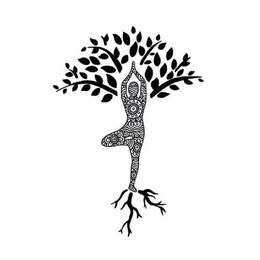 Thank you to everyone who joined our yoga practice this weekend where we reflected on the relative nature of good and bad. The more we commit to our yoga practice, the more we come to understand the value of working to move beyond our mind’s automatic habit of quickly labeling things, people and experiences as "good" or "bad," (or other such judgmental adjectives). We all see the world through tinted glasses based on our values and past experiences. When we cultivate the ability to realize this limiting behavior through meditation, mindfulness or yoga, we get closer to seeing things the way they really are. This 2,000-year old Taoist parable beautifully illustrates this concept, and invites us to reframe our thinking to consider the big picture when it comes to our lives. "An old Chinese farmer lost his best stallion one day and his neighbor came around to express his regrets, but the farmer just said, ‘Who knows what is good and what is bad.’ The next day the stallion returned bringing with him 3 wild mares. The neighbor rushed back to celebrate with the farmer, but the old farmer simply said, ‘Who knows what is good and what is bad.’ The following day, the farmer’s son fell from one of the wild mares while trying to break her in and broke his arm and injured his leg. The neighbor came by to check on the son and give his condolences, but the old farmer just said, ‘Who knows what is good and what is bad.’ The next day the army came to the farm to conscript the farmer’s son for the war, but found him invalid and left him with his father. The neighbor thought to himself, ‘Who knows what is good and what is bad." (Parable language quoted from the Secular Buddhist Blog.) As Kent Moreno explains, "The Taoist prefers to look at life events without judgment or interpretation. According to Taoism, the true significance of events can never be understood as they are occurring, for in every event there are elements of both good and bad. Furthermore, each event has no specific beginning or end and may influence future events for years or even centuries to come." As Moreno touches upon, events in life will always involve good and bad. The great achievement is often accompanied by many sacrifices. The turn of bad luck usually comes with a silver lining. And from the wider-angle perspective, something "bad," but small in scope, may happen that prevents a major calamity down the road. If these ideas resonate with you, a great way to practice application of the philosophy is to begin with asanas (the physical practice of yoga). Work for a while with the intention to accept yourself exactly as you are each time you come to the mat. Make your yoga practice a no judgment zone. Ignore what the teacher and other students look like in identical poses. If your energy level is low, modify and observe child’s pose when needed, instead of pushing yourself to replicate yesterday’s practice. Use your flow to practice radical acceptance of the self. And above all – drop any notions of what “should” be happening! Once you find your way on the mat, begin to think about how these concepts can be extended into other parts of your life. As Jon Kabat-Zinn puts it, "give up coercing, resisting, or struggling, in exchange for something more powerful and wholesome, which comes out of allowing things to be as they are without getting caught up in your attraction to or rejection of them, in the intrinsic stickiness of wanting, of liking, and disliking." The more involved with yoga and yoga philosophy you get, the more you will learn that these ideas are fundamental to the tradition. Buddha describes yoga as "the journey of the self, through the self, to the self." Yoga is not a competitive sport (as much as Instagram may sometimes suggest that). It is not a place where we should be thinking along the lines of good, bad or most especially, should. It is an avenue to living a self-accepting, and therefore authentic, life. 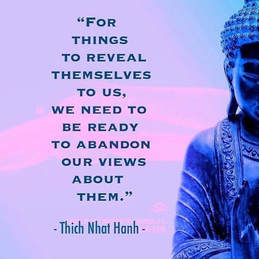 Thank you to everyone that attended yoga today where we focused on cultivating non-judgement on and off the mat. Today's class reading are included below. Reading from Wherever You Go There You Are by Jon Kabat-Zinn "It doesn’t take long in [yoga] to discover that part of our mind is constantly evaluating our experiences, comparing them with other experiences or holding them up against expectations and standards that we create, often out of fear. Fear that I’m not good enough, that bad things will happen, that good things won’t last, that other people might hurt me, that I won’t get my way, that only I know anything, that I’m the only one who doesn’t know anything. We tend to see things through tinted glasses: through the lens of whether something is good for me or bad for me or whether or not it conforms to my beliefs or philosophy. If it is good, I like it. If it is bad, I don’t like it. If it is neither, I have no feelings about it one way or the other, and may hardly notice it at all. When you dwell in stillness, the judging mind can come through like a foghorn. I don’t like the sensation in my knee…. This is boring…. I like this feeling; I had a good [yoga practice] yesterday, but today I’m having a bad [yoga practice]. …It’s not working for me. I’m no good at this. I’m no good period. This type of thinking dominates the mind and weighs it down. It’s like carrying around a suitcase full of rocks on your head. It feels good to put it down. Imagine how it might feel to suspend all your judging and instead to let each moment be just as it is, without attempting to evaluate it as "good" or "bad." This would be true stillness, a true liberation. [Yoga is a practice] of cultivating a non-judging attitude towards what comes up in the mind, come what may. That doesn’t mean judging won’t be going on. Of course it will, because it is in the very nature of the mind to compare and judge and evaluate. When it occurs, we don’t try to stop it or ignore it, any more than we would try to stop any other thoughts that might come through our mind. The tack we take in [yoga] is simply to witness whatever comes up in the mind or the body to recognize it without condemning it or pursuing it, knowing that our judgments are unavoidable and necessarily limiting thoughts about experience. What we are interested in [with yoga] is direct contact with the experience itself – whether it is of an inbreath, an outbreath, a sensation or feeling, a sound, an impulse, a thought, a perception, or a judgment. [In this way] we can act with much greater clarity in our [practice, without immersion] in a stream of unconscious liking and disliking, which screens us from the world and from the basic purity of our own being." Beginning from "Where We Are" from The Heart of Yoga "When we go into a posture or carry out a movement that feels tense, it is difficult to notice anything else besides that tension. Perhaps when we sit in a cross-legged position our only thought is for the pain in our strained ankles. In doing this we are not really in the asana we are striving for – we are obviously not yet ready for this particular position. Rather, we should first practice something easier. This simple idea is the foundation for our whole yoga practice. Practicing the postures progressively, we gradually achieve more steadiness, alertness, and overall comfort. If we want to make this principle of asana practice a reality, we have to accept ourselves just as we are. If we have a stiff back we have to acknowledge this fact. It may be that we are very supple but our breath is very short, or perhaps our breathing is all right but our body gives us certain problems. It is also possible to feel comfortable in an asana while the mind is somewhere completely different. That is not asana either. It is only possible to find the qualities that are essential to asana if we recognize our own starting point and learn to accept it." This quote from Being Peace by Thich Nhat Hanh, speaks more abstractly to our theme, allowing us to think about non-judgment as an enlightened frame of mind. "Do not think that the knowledge you presently possess is changeless, absolute truth. Avoid being narrow-minded and bound to present views. Learn to practice non-attachment from views in order to be open to receive others’ viewpoints. Truth is found in life and not merely in conceptual knowledge. Be ready to learn throughout your entire life and to observe reality in yourself and in the world at all times." CLOSING DHARMA QUOTE Cultivating Non-judgment Quote by Rumi "Out beyond ideas of wrongdoing and rightdoing there is a field. I’ll meet you there. When the soul lies down in that grass, the world is too full to talk about." 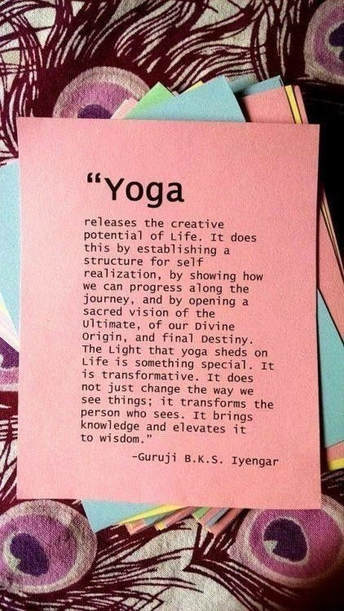 The late grand master of modern yoga, B.K.S. Iyengar was born in Belur, India, on December 14, 1918. When he was 14, his brother-in-law, T. Krishnamacharya, introduced him to a yoga practice, which improved his tuberculosis. Iyengar pioneered the use of props to make poses accessible to a wide array of students. He has written a number of books, including Light on Yoga, which many practitioners esteem as the bible of yoga. Iyengar himself described his variation of yoga as follows, "I just try to get the physical body in line with the mental body, the mental body with the intellectual body, and the intellectual body with the spiritual body, so they are balanced. Each asana has an optimum line or position. From the head to the foot, from the front to the back, from the right to the left—without deviation, without distortion." To learn more about B.K.S. Iyengar and Iyengar Yoga, visit the official website at http://bksiyengar.com. 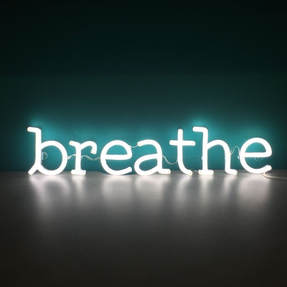 "In the breath, the soul finds an opportunity to speak." From “Breath” by Danna Faulds You may have noticed that all yoga classes, no matter the style, begin and reinforce an emphasis on intentional breathing. Teachers that weave Sanskrit (the ancient language of India in which classical yoga texts are written) into their classes will refer to this focus as Pranayama breathing. Pranayama is defined as the regulation of the breath through certain techniques and exercises. In Sanskrit it is derived from prāṇa "breath" + āyāma "restraint." Another similar translation of the concept describes prana as the life force or breath sustaining the body; with ayama translating to “extend or draw out." Together two mean breath extension or control. "In many ways, the cosmic energy that is Prana corresponds to that of modern nuclear physics, which regards all matter as energy ‘organized’ in different ways. This is Prana with a capital P. It is Prana that knows no boundaries. Its source is the energy of the universe, that which is unchanging within you, your very soul, and it feeds your energy body, what the ancient texts call the pranamayakosha. Prana (small p) refers to the energy in the atmosphere – oxygen-rich air. This prana, also known as vaya, feeds the physical body, what the ancient Yogis called the annamayakosha. What does knowing how to breathe look like? It is breathing that moves like a wave through your body, originating in the diaphragm rather than the thoracic region of the chest. It is full and deep and calm. To breathe this way, the body must be relaxed. When we consciously tense the muscles and hold the breath, there is a relaxed feeling that accompanies the release. So the simplest way to relax is by contracting the muscles while holding the breath, then letting the muscles and breath release completely." Amy Weintraub If you are a beginner to pranayama techniques, check out this in-depth Breathing Lessons article online that includes instructions for several variations on breathing exercises you can include with your home yoga practice. Thank you to everyone that joined us for yoga today. Check out this fabulous infographic describing the benefits of cultivating a regular practice both in the short and longterm. Namaste!
 Why Does America Struggle with Such a Preventable Health Crisis? The answer is very complicated and most frustratingly, it has a lot more to do with our environment than failings or lack of willpower on the part of the individual. As many have observed, if you “go with the flow” in America, you will be overweight or obese. This does not mean, however, that individuals are powerless or that we should accept this with certainty as our assured fate. Education and wellness coaching can go a long way in empowering individuals to swim against the current towards better health and wellness. This blog post will explore some of the issues that tangle together to make healthy living in this country so elusive for the majority. The more you learn and know about the environment in which we need to make food, activity and ultimately health decisions each day, you more you realize weight issues and obesity can not be blamed on a failure of individual agency or willpower. We are not doomed, but understanding the issues described below is imperative for the individual to have a chance of navigating themselves and their families towards health. In America, health is the ultimate “knowledge is power” issue of our time. Our Very New Toxic Environment is at Odds with Our Evolution In the last 75 years, we have created a toxic environment in America that is incompatible with the way our body’s needs have evolved. Our modern world is characterized by excess energy reserves hard to avoid and this abundance of calories is evolutionarily new. For 4 million years humans have inhabited an environment of food scarcity so we are programed to eat as much as possible when calorie dense foods, such as meat, become available. This hardwiring allowed us to survive food insecurity, and even famine, but in our current landscape of overabundance, the instinct becomes disadvantageous. Food is now obsequious everywhere in America – we see it at gas stations and bookstores and vending machines are present at every school and workplace. This is another new development and it provides us with unrelenting external cues to eat. We are also designed to walk several miles a day in search of food, water, and firewood—as indigenous people do to this very day. Since our bodies depend on this activity to function properly, our new sedentary, indoor lifestyles cause chronic discomfort, pain and arthritic conditions for the 1 in 4 American adults that get no physical activity at all. Additionally, up until the very recent past, people lived and worked in dwellings without the consistent temperature control of central heating and air conditioning. That meant that many calories consumed in past generations where expanded to maintain the body’s internal temperature. These biological factors put us at odds with our new food supply, which has become completely industrialized during the same period of time. Stay tuned for upcoming blog posts that take a deeper dive into the health and wellness issues that arise as a consequence of our industrialized food system. Explore Wellness Coaching to Combat These Issues Learn more about developing your own personalized formula for heath and wellness to combat these issues by working with a Thrive Wellness Coach.  Apologizing chronically can be a sign that you are not feeling that you have much self worth. Many people suffer with the tendency to apologize all the time, chronically, for everything. On the one hand, apologizing is a social convention that keeps interactions between people polite, and in that way it can be very helpful. On the other hand, if we find ourselves apologizing for everything, it might be time to look at why we feel compelled to say "I'm sorry" so often. Ultimately, saying you're sorry is saying that you are responsible for something that has gone wrong in the situation. Whether it's negotiating a parking spot, moving through the aisles of the supermarket, or reaching for what you want, there are times when sorry is the right thing to say. But there are other times when "excuse me" is more accurate. Sometimes saying you're sorry is like saying that the other person in the equation has more of a right to be here than you do. Of course, it's true that using the word sorry can simply be an innocuous way of defusing tension. However, if you find that you say sorry all the time, you might want to look a little deeper and see where in your psyche that might be coming from. If it's a pattern, breaking it may simply take some awareness and practice. The first step is observing yourself each time you say it, without being hard on yourself about it. Throughout your day simply notice when you apologize. At first, you might be surprised to see that you do it even more than you first realized. After a day or two of simply observing, try to tune in to what it is you are feeling right before you say it. You might be feeling threatened, embarrassed, intensely anxious, or a variety of other feelings. Over time, try to stop yourself before the words come out and just be with the feeling that's there. You may recognize it as one from your childhood, one that's been with you for a long time. The more you are able to see it, the freer you will be not to be sorry all the time. Deep abdominal breathing encourages full oxygen exchange — that is, the beneficial trade of incoming oxygen for outgoing carbon dioxide. Not surprisingly, it can slow the heartbeat and lower or stabilize blood pressure. 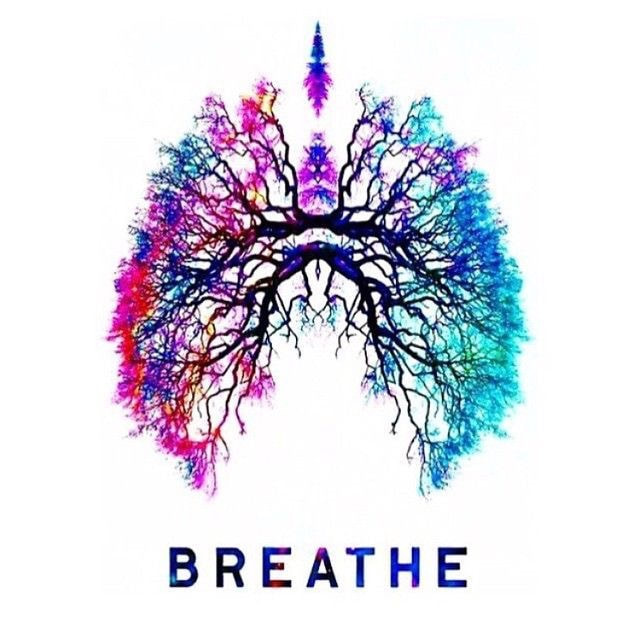 Breath focus helps you concentrate on slow, deep breathing and aids you in disengaging from distracting thoughts and sensations. It's especially helpful if you tend to hold in your stomach.
First steps. Find a quiet, comfortable place to sit or lie down. First, take a normal breath. Then try a deep breath: Breathe in slowly through your nose, allowing your chest and lower belly to rise as you fill your lungs. Let your abdomen expand fully. Now breathe out slowly through your mouth (or your nose, if that feels more natural). Breath focus in practice. Once you've taken the steps above, you can move on to regular practice of controlled breathing. As you sit comfortably with your eyes closed, blend deep breathing with helpful imagery and perhaps a focus word or phrase that helps you relax. In a recent Forbes article, Noma Nazish breaks down why self-care is so important for wellness, and includes a list of simple ways to introduce more into your life. Work with a Thrive Wellness Coach to develop your own custom formula for health and wellness.
“No matter how indulgent or fancy the term may sound, self-care is crucial for our physical, emotional and mental well-being. You shouldn’t neglect self-care and here's why:
Click here to read the full article.  We can add another benefit to exercise to our already long list. According to this great infographic from Fix.com, Your Brain on Exercise, “[regular exercise] can improve learning and mental performance, encourage the pituitary gland to release endorphins, and reduce sensitivity to stress, depression, and anxiety.” Exercise is particularly important for children with developing brains, and regular doses often improves academic performance as, “a link has also been established between attention span and concentration and exercise.” Learn more by viewing the full infographic: Your Brain on Exercise.  The long-term strength and resilience of our romantic relationships highly influences our individual sense of happiness and wellbeing. However, now that gender roles are less rigid, many people are unsure exactly how to build and sustain strong partnerships. As Hara Estroff Marano explains, “Most modern relationships no longer rely on roles cast by culture. Couples create their own roles, so that almost every act requires negotiation.” Further complicating things, she asserts that, “because people's needs are fluid and change over time, and life's demands change too, good relationships are negotiated and renegotiated all the time.” Read Marano’s full piece, The New Rules of Relationships, for a list of helpful considerations to keep your connection and intimacy strong. |
Archives
January 2022
Categories
All
|
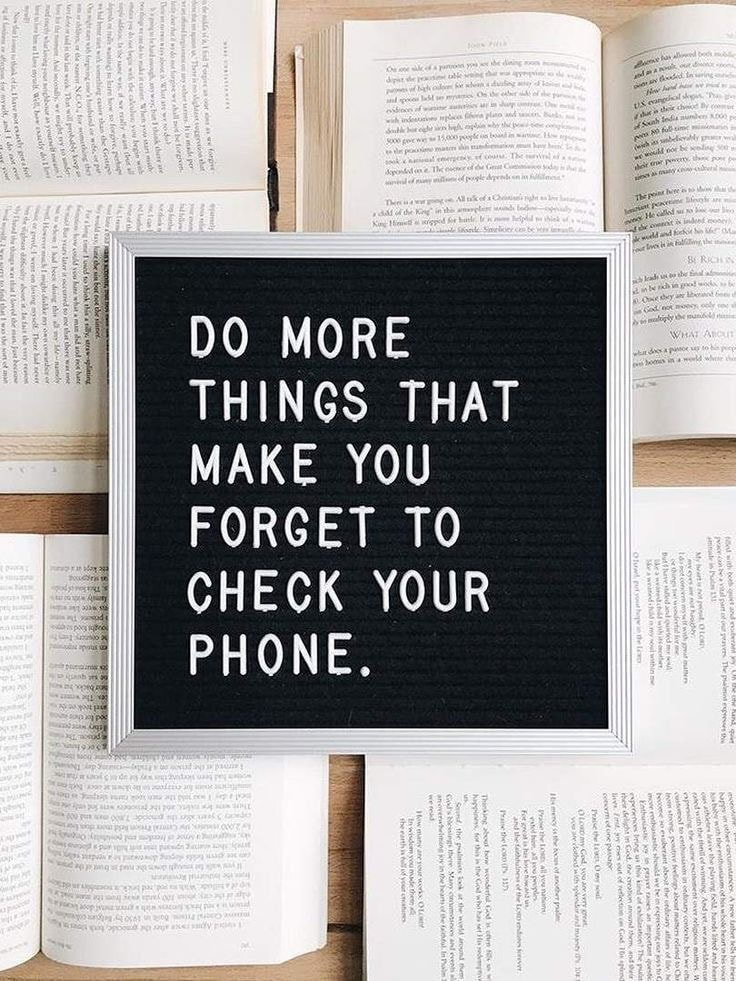

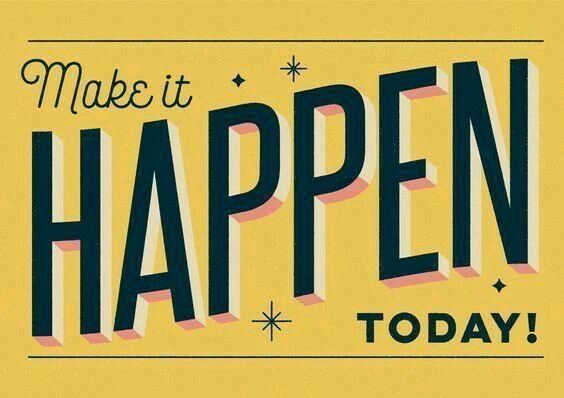
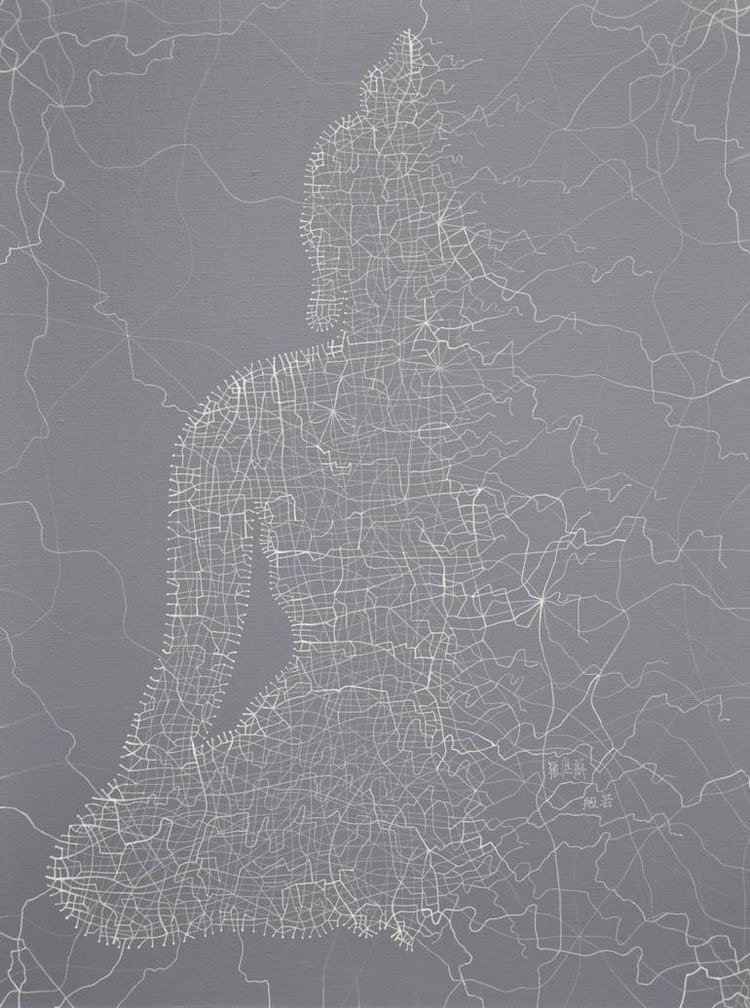
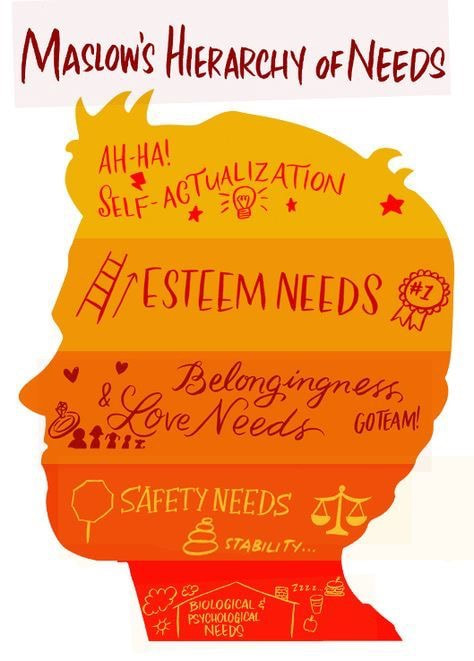
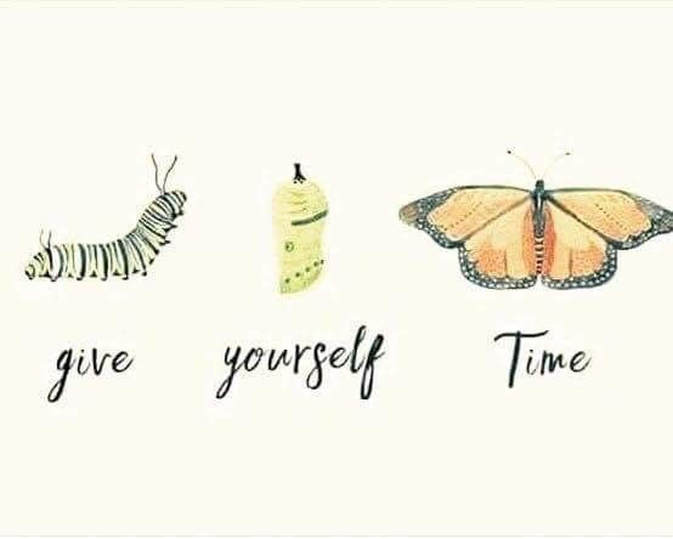
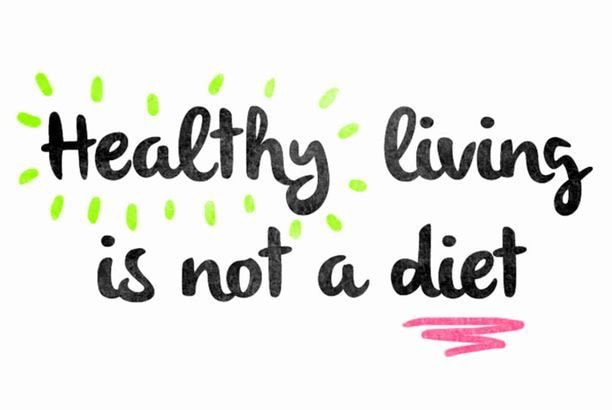

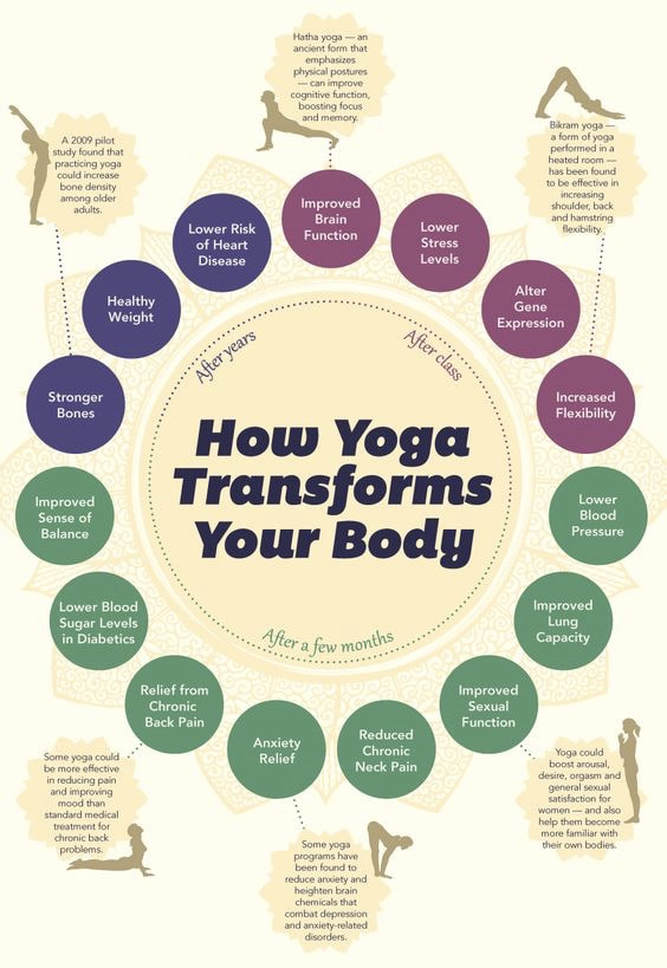
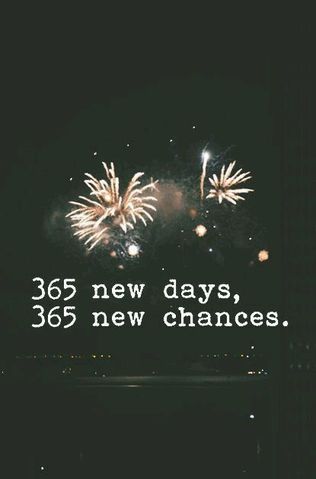
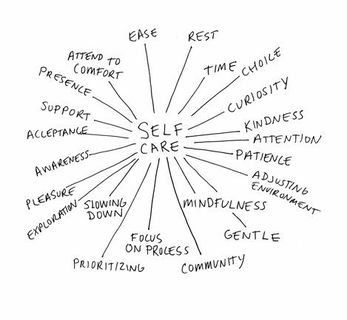

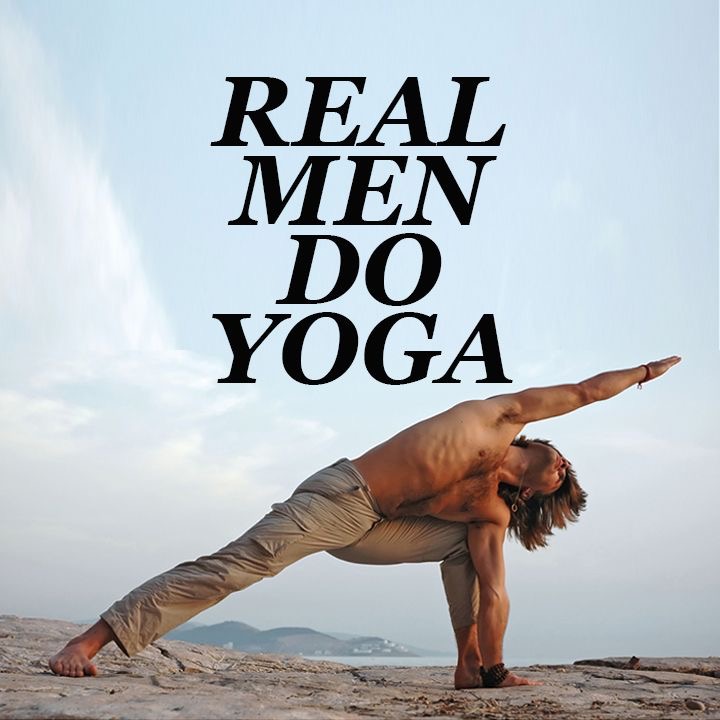
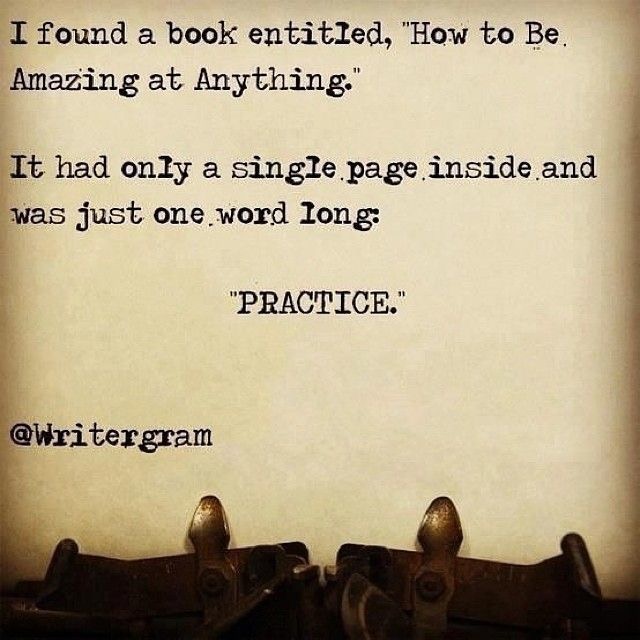
 RSS Feed
RSS Feed